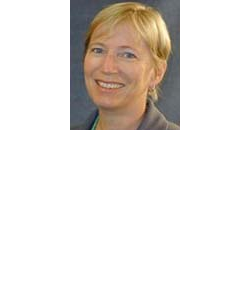CNS Director Reflects on Testimony to Presidential Bioethics Commission

The following interview with CNS Director Barbara Herr Harthorn was excerpted from The Santa Barbara Independent website. It was conducted after Harthorn returned from her February testimony to the Presidential Commission for the Study of Bioethical Issues. To read the interview in its entirety, click here. To view video of the testimony, click here.
As the head of UCSB’s Center for Nanotechnology in Society (CNS), Barbara Harthorn has spent the past eight-plus years leading a team of researchers in studying people’s perceptions of the small-scale science with big-scale implications. Sponsored by the National Science Foundation, CNS enjoys national and worldwide recognition for the social science lens it holds up to physical and life sciences.
For some perspective, a nanometer clocks in at about one-billionth of a meter — and the thickness of a piece of paper is a whopping 100,000 nanometers. As tiny as the units are, their applications are growing increasingly popular.
Earlier this year, Harthorn attended a meeting hosted by the Presidential Commission for the Study of Bioethical Issues. The commission’s chief focus was on the intersection of ethics and brain research, but Harthorn was invited to share her thoughts on the relationship between ethics and nanotechnology. A few days after her testimony, Harthorn — who also teaches anthropology at UCSB — spoke with The Santa Barbara Independent about what opportunities nanotechnology pushes forward and what challenges it creates in making sure those opportunities don’t cross the ethical line. Below is an edited version of our conversation.
What are some common uses of manufactured nanomaterials? In the health industry, there is a huge array of applications, including cosmetics, skin products, and sunscreens. CNS started in January 2006; at that point, the largest number of patents in the world was held by L’Oreal. The nanoscale forms of metal oxides have different optical properties, making them very attractive for use in cosmetics.
To continue reading the interview on The Santa Barbara Independent website, use the link below.










